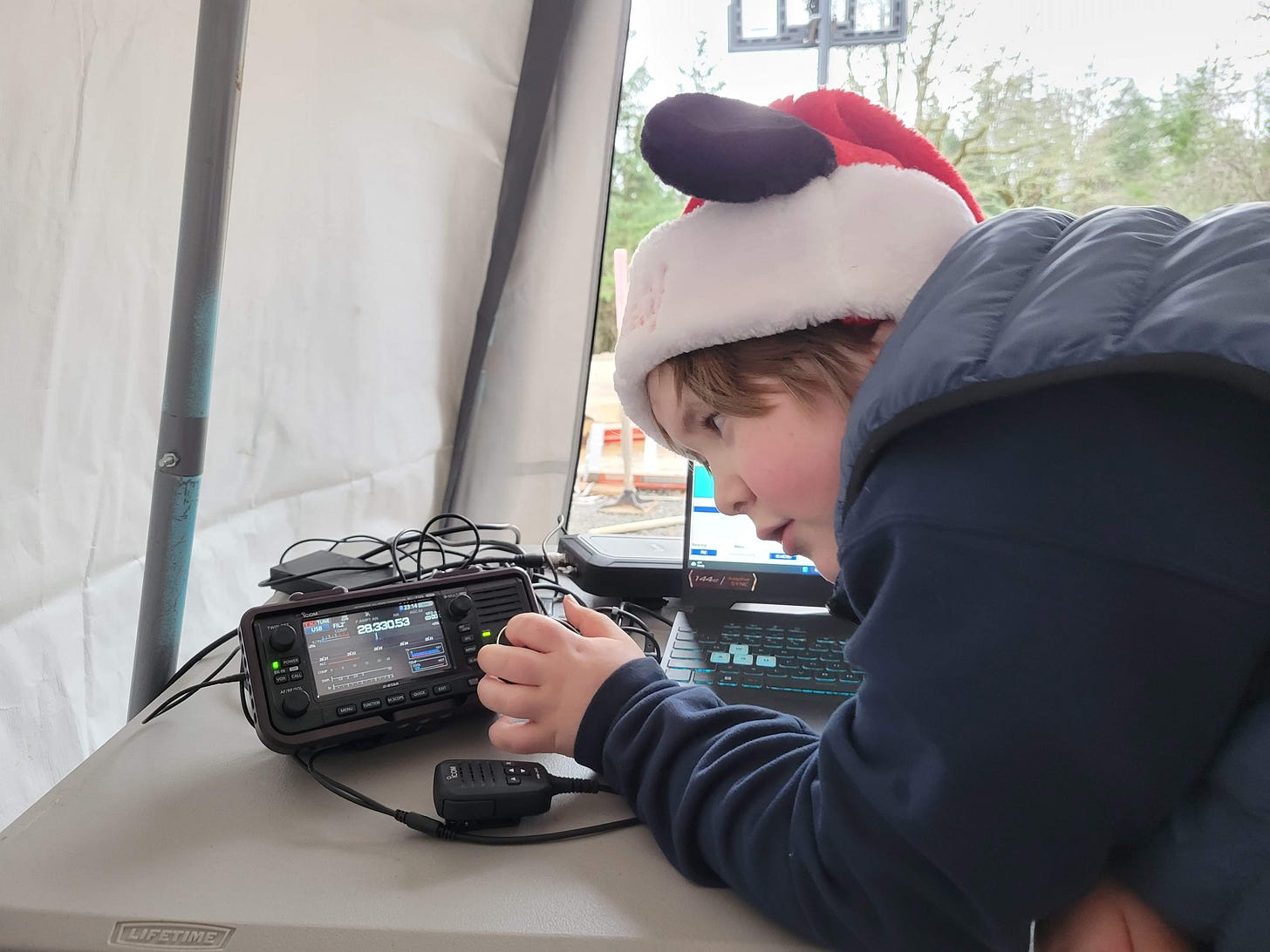
A Little About Me
Hello! My name is Jason Milldrum and I hold the amateur radio callsign NT7S. I’ve been interested in radio for a good portion of my life, and I’ve been a ham radio operator since 1992. I worked at Tektronix on the Real-Time Spectrum Analyzer line after receiving my AAS EET degree, and then struck out on my own. I own the open source amateur radio company named Etherkit (currently dormant) and have had my own personal blog documenting my ham radio activities for about a decade.
My family, including my wife Jennifer and sons Noah and Eli, have recently moved to our country property in the gorgeous wine country of Yamhill County, Oregon. You can read more details about that here. The disruptions to the supply chain from the response to the COVID pandemic dealt a serious blow to my business, so I put it on hiatus in order to regroup and put energy into escaping the city and moving us to rural property. Now that this difficult task is nearly complete, I’m ready to get back to work.
Foundations
Possibly, the greatest achievement of my ham radio career is the qrp-l (email listserv) group project, wherein I designed a QRP CW transceiver built from discrete components, constructed using Manhattan construction technique1, kitted out with build documentation provided. As a relative RF novice, this was an audacious undertaking, yet it was fairly successful. I don’t recall exactly how many people participated in it, but it was a decent number for sure. I do recall the sense of fun and camaraderie that we had during this time, and I’ve been wanting to tap into that again for quite some time now.
What Are You Doing?
With Solar Cycle 25 in a nice upswing, now is a great time to launch a new radio learning and experimenting platform. Things are still very early in the design process, but I am envisioning a modular system that consists of a 3D printed open chassis/backplane with integrated PSU and a user interface panel, with spaces for standardized-sized PCB modules and spaces to route signal cables. The main product would be a high-performance QRP CW transceiver, but the platform could also be reconfigured for different RF projects and experiments such as a simple receiver for those without a ham license, a SSB rig, or a WSPR platform, to name a few off the top of my head. Circuits would be focused around the block diagram of the transceiver, so that each PCB corresponds to a block. Most components would be pre-populated SMT, so that the end user would installing things like toroids and connectors that require human construction. Emphasis would definitely be on the system level: learning the blocks necessary for different radio topologies, how to measure performance and ensure that your radio is working as it should be. All design files would be open source and publicly available so that you could roll-your-own if desired, or you could purchase the blocks and accessories from Etherkit.
The idea for this Substack has been brewing in my mind for quite a while, and now I believe that I have the right time, tools, and opportunities to make this happen. You may have known that I have previously been on Patreon and then SubscribeStar but was never able to really put out the content required to make those successful. I’ve been reading various authors on Substack for a little while now, and I’m super impressed with the quality of writing here and the tools that Substack gives to authors, which is what I’ve decided to try to set up shop here.
One of my biggest goals is to foster that sense of community that we saw during those golden days of places like qrp-l and the early days of Twitter, before it became the Hell Site a few years ago. Elmering in-person is excellent, but we should also be striving to do it online, especially reaching out to those who don’t have an in-person Elmers available, which is the situation that I was in when I first started in ham radio. I have a pre-teen son who is a bit interested in ham radio, and I’m hoping that he’ll be interested in participating in this project with me. With that in mind, I definitely want to make this endeavor accessible to younger people and novices in general.
Let me know what you think about this idea in the comments.
Why Now?
Technology (and access to technology) has improved so much since I launched the qrp-l group project transceiver, especially in the manufacturing and test & measurement departments. Just about any person with a PC and an internet connection can now design for free and have manufactured and shipped directly to him quality PCBs, for only the cost of the boards themselves. Also, there are plenty of cheap and decent RF test gear available now, such as the nanoVNA and tinySA. Back in the old days, you had to be able to find and afford old boatanchor test gear, as well as have space to set it up. Inexpensive and good quality consumer-level FDM 3D printers allow one to print out a wide variety of structural elements, and with some free software and a bit of learning curve, you can print just about anything you can think of, as long as you don’t mind it in PLA or other common filament type.
Our communication and IT tools are also a lot better. I know that there’s something to be said for the simplicity of a listserv, but having access to Discord-like chats and Zoom-like teleconferencing has really changed the game in allowing for a much richer variety of media to be shared. GitHub allows anyone to share design files and code with the world, and anyone else can copy it and modify it for their own use.
What Will I Get?
So here’s the plan for this Substack. I would like to be able to bring some income in from my work, but I understand that you’re not going to pay for it until I actually have something to show you. I’m enabling paid subscriptions now, but I will not be paywalling any content until I have at least one full learning module published. Most likely that first learning module will be a receiver so that anyone can build it, licensed ham radio operator or not.
I’m setting myself a goal and recurring task in my calendar to write at least one useful and informative paid subscriber post per week as well. I will be keeping my blog Ripples In The Ether focused more on personal posts, and most of the technical stuff will be posted here.
One of the greatest challenges that I’ve faced in having publicly-facing designs and code is that a lot of people ask for support, and it’s very difficult to give everyone what they want. People often drop some fairly complex problems in my lap and expect me to figure them out for free. Frankly, that’s impossible. I do want to help those who I can, and so one of my paid subscriber benefits will be greater access to support from me. At the very least, that will take the form of being able to message me directly through Substack chat and email, which will help me to keep focused on support, instead of having everything come through my personal email. This may evolve in the future, but seems like a good starting point.
The biggest thing I want to do here is foster a positive and supporting community, so that’s going to be foremost in my mind as I develop this Substack.
The next post will be a first pass “white paper” of a system architecture from a high level.
If you think this sounds interesting, then please use the share button to let friends who may be interested know. Since I’ve dropped off of Twitter, I’m kind of back at the starting line regarding building interest. Your help is greatly appreciated! Hope to see you participating!



